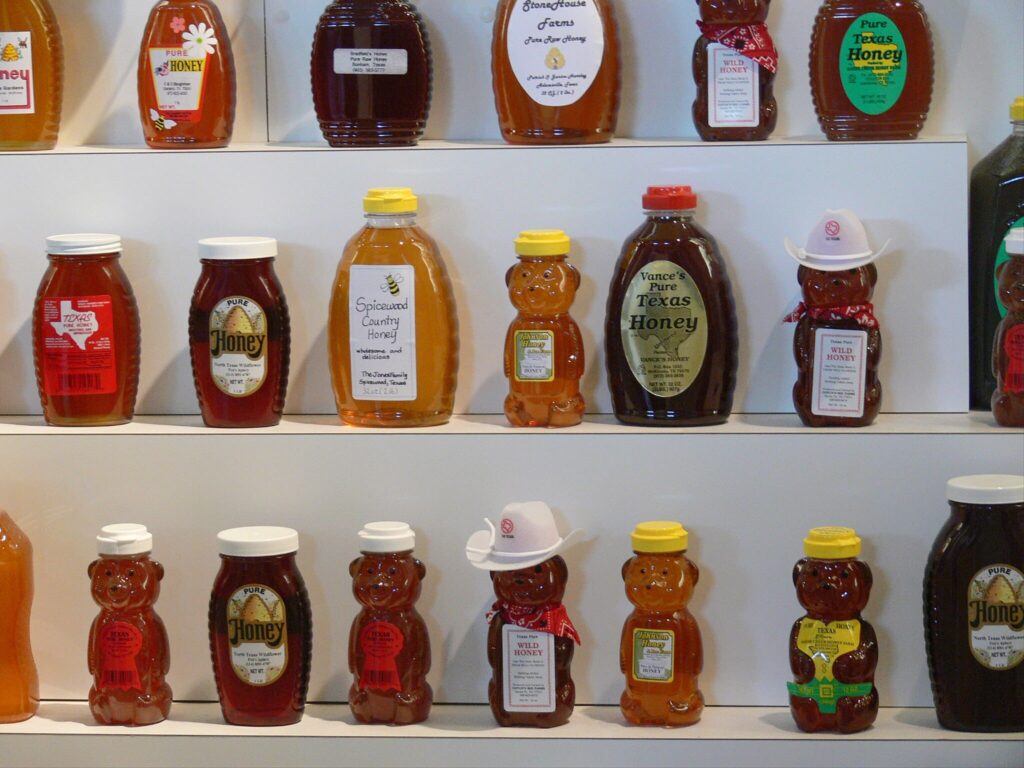
What makes Wendell Estate Honey So White?
We get this question a lot. Some people wonder if we’ve added colouring to the honey or done something else to whiten the colour (we emphatically haven’t – the color is completely natural!). Some of our competitors have even started selling and advertising white honey and using white-colored jars to give the impression that their honey is whiter than it actually is. We wouldn’t go there. The truth is that there are several factors combining to create the extra white colour of Wendell Estate Honey.
The Flowers
Some flowers like buckwheat and manuka result in darker coloured honey while other flowers, like clover and acacia, yield a lighter-coloured honey. Our prairie blossom honey is made from the nectar of clover, alfalfa and many other prairie blossoms, which overall tend to be light in colour and mild in flavour.
Taste it yourself with our 250g jar, perfect for first-time buyers
In the picture to the right you can see honey from two different sources, both are fresh, but the raw white honey on the right is also soft-set (crystallized)
Discover why raw honey is healthier than other sweeteners.
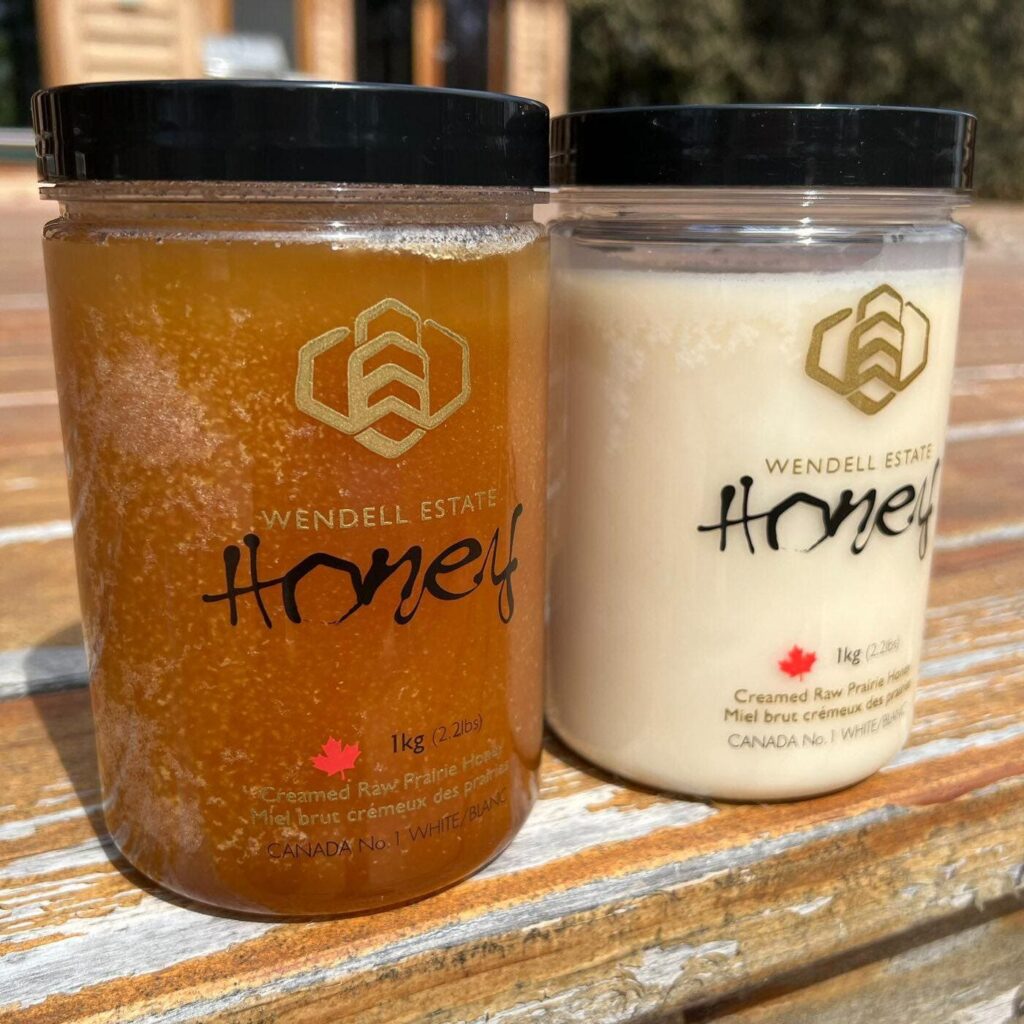
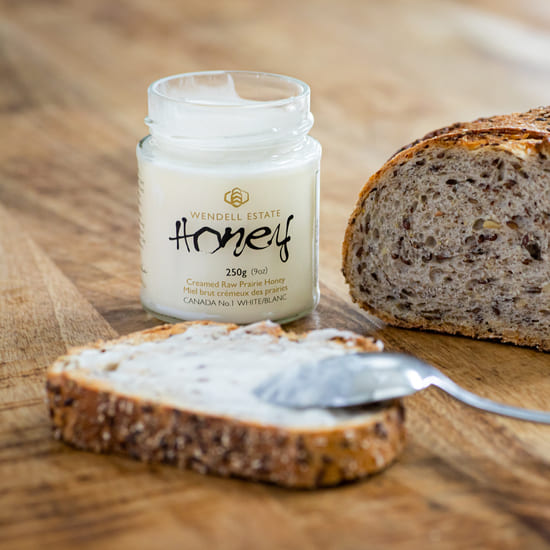
We Like the Subtle, Mild Flavours of White Honey
We select what we think is our most delicious honey for the Wendell Estate Honey jars.
We make a lot of honey on our farm, and the vast majority gets sold in bulk. Most of our honey is light in colour. Occasionally, we get darker honey from flowers like dandelion or buckwheat, or even very rarely honeydew honey in the picture above, but we prefer the more delicate flavours of the lighter honeys our bees produce, so this is the honey we choose for our premium retail jars.
Enjoy the same premium quality in our 1kg family jar.
Still wondering about storage, pasteurization, or sugar content? Read our Raw Honey FAQ.
Honey Changes Colour When It Crystallizes
Analogous to water crystallizing into ice, honey also changes colour to become opaque and lighter as it crystallizes. When we package the fresh liquid honey, it more closely resembles the amber liquid many people are more familiar with. Even in the liquid form, our honey is considered “extra white” or even “water white” on the industry standard honey colour scale, expressed in mm on the Pfund scale. The curious can read this post describing Pfund honey colour ratings and here is a NYT article discussing honey colours.
Learn how our beekeeping practices keep your honey pure, from hive to jar.
The picture on the right shows Wendell Estate Honey being packaged fresh on our farm, directly after being spun from the honeycombs when it’s still a liquid. This is what “extra white” or “water white” liquid honey looks like (I’m not sure of the exact Pfund reading on the pictured honey.)
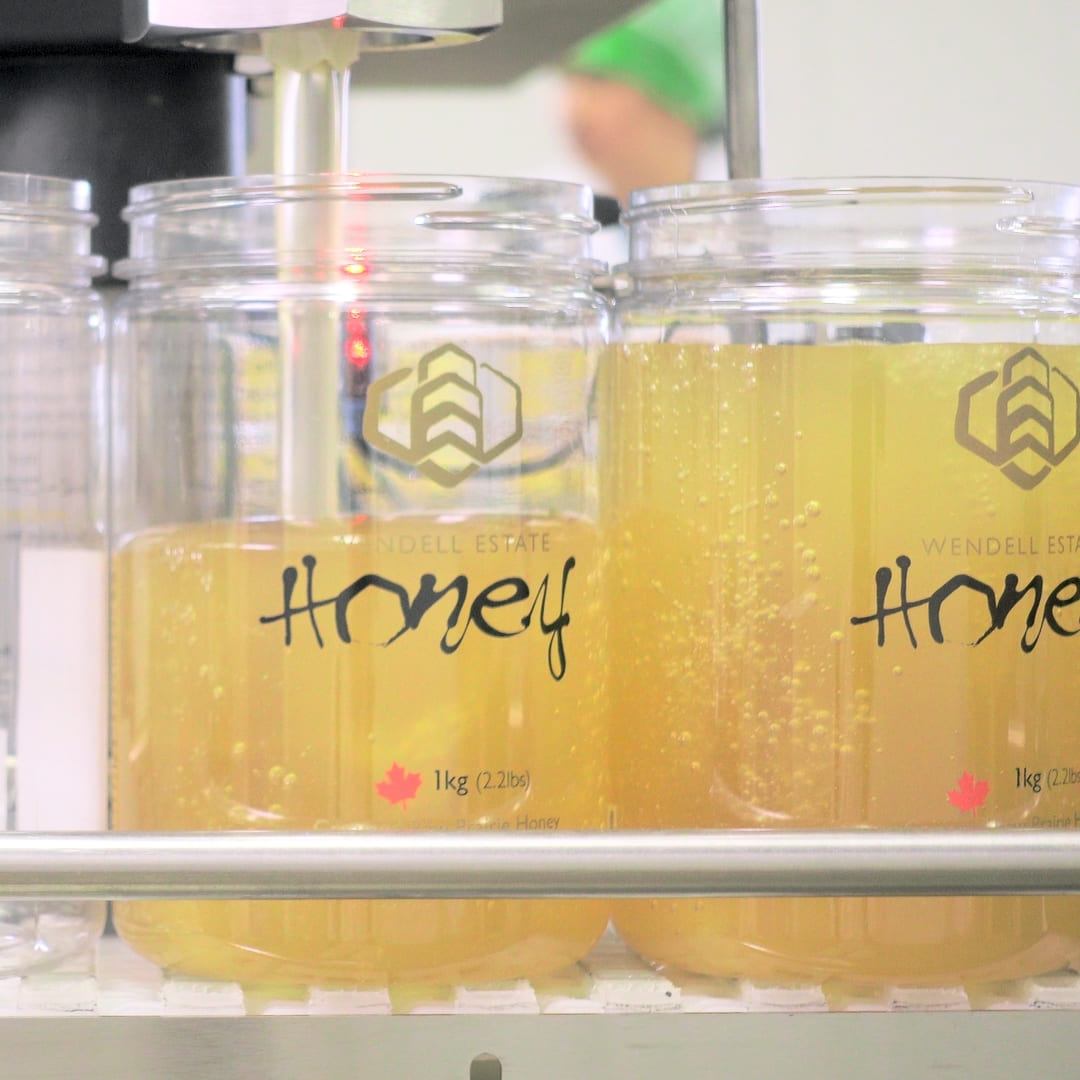
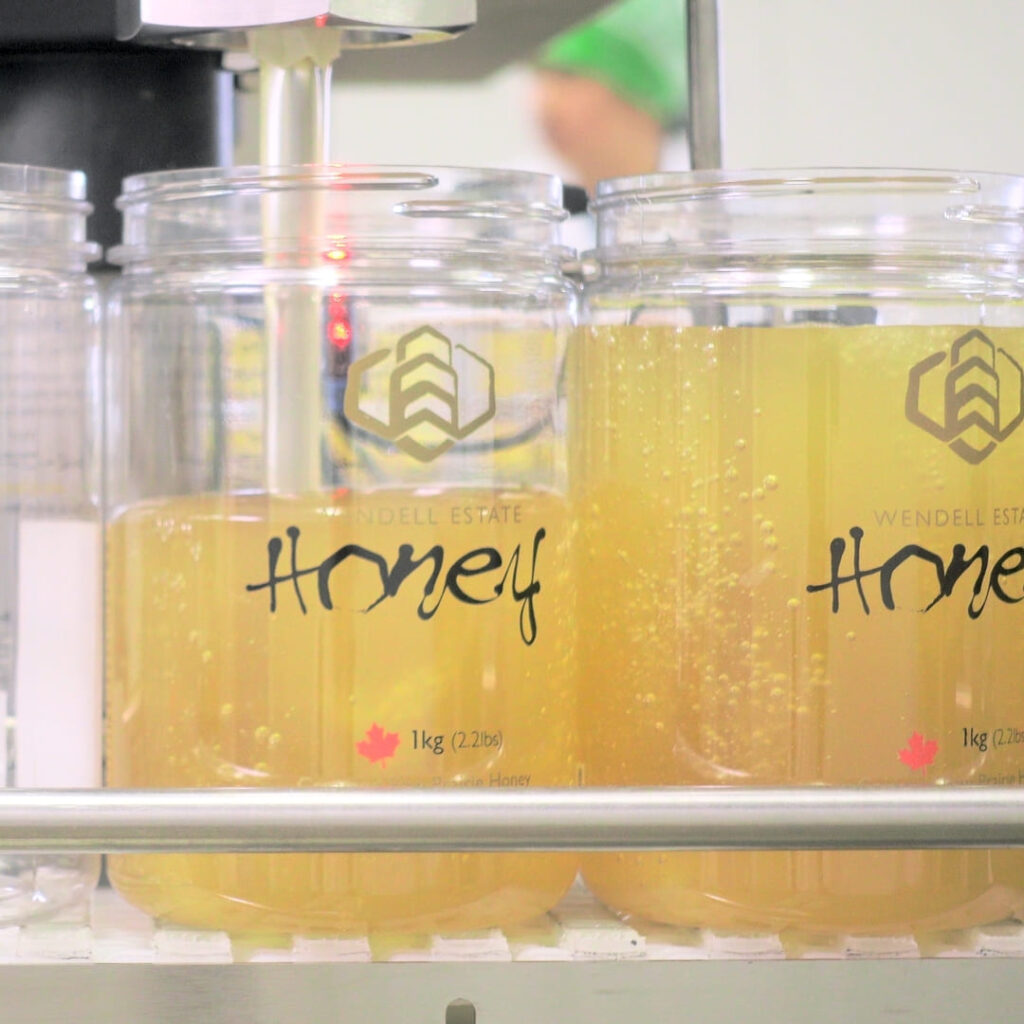
Honey Changes Colour When It Crystallizes
Analogous to water crystallizing into ice, honey also changes colour to become opaque and lighter as it crystallizes. When we package the fresh liquid honey, it more closely resembles the amber liquid many people are more familiar with. Even in the liquid form, our honey is considered “extra white” or even “water white” on the industry standard honey colour scale, expressed in mm on the Pfund scale. The curious can read this post describing Pfund honey colour ratings and here is a NYT article discussing honey colours.
Learn how our beekeeping practices keep your honey pure, from hive to jar.
The picture a shows above Wendell Estate Honey being packaged fresh on our farm, directly after being spun from the honeycombs when it’s still a liquid. This is what “extra white” or “water white” liquid honey looks like (I’m not sure of the exact Pfund reading on the pictured honey.)
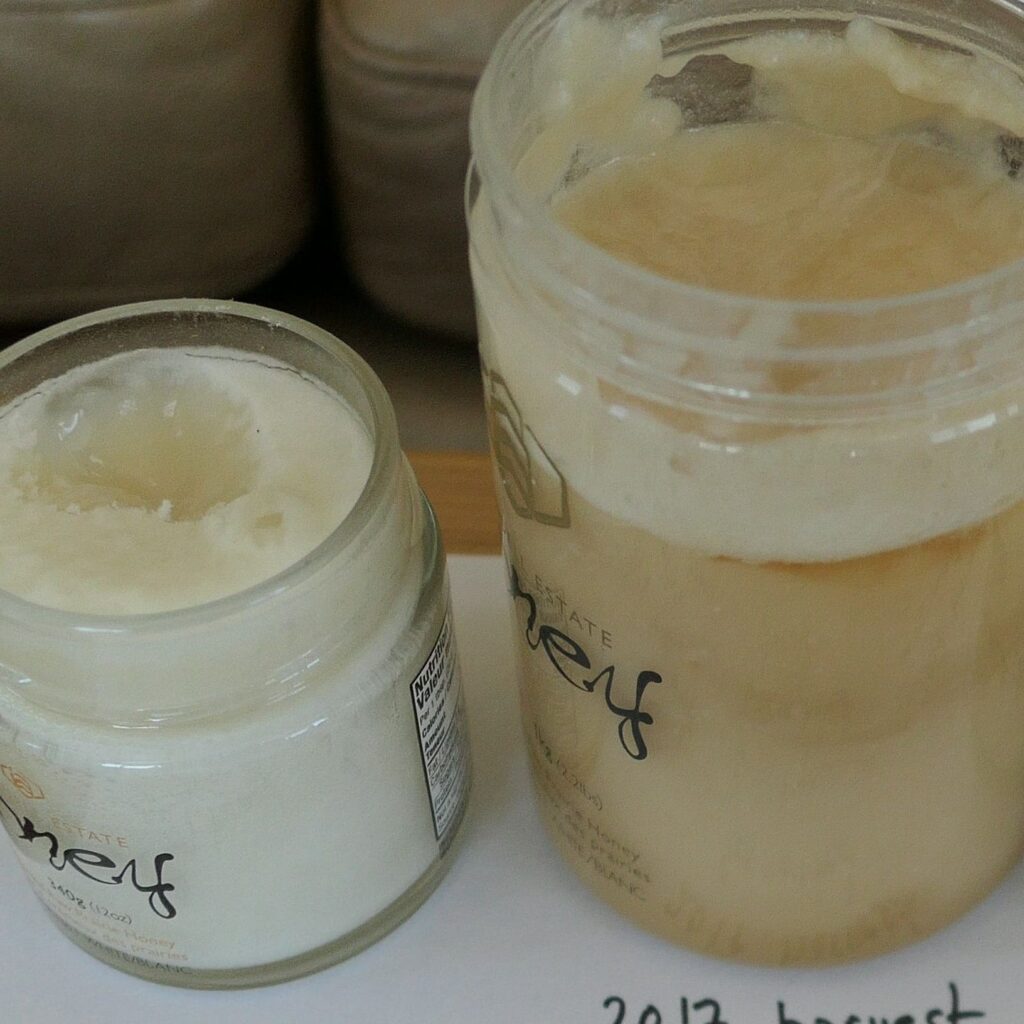
We Take Great Care to Keep Our Honey White and Fresh
As honeycomb ages, the wax gradually darkens with environmental exposures inside the beehive. Honey stored in old, dark honeycomb by the bees can become darker in colour as it absorbs some compounds from the wax. We try to dispose of (recycle) older honeycombs. The colour of honey darkens when it is exposed to heat. It also darkens as the organic compounds break down over weeks to months at ambient temperatures. The white colour of Wendell Estate Honey attests to its freshness.
In the picture of open jars, the two honeys both started out white. The one on the left has been in cold storage for over a year and is still white and fresh, while the honey on the right has darkened due to a year or more in room-temperature storage. It also appears well on its way to fermentation (harmless), like due to being exposed to the humidity in the ambient air.
Jeremy Wendell
Share this story
